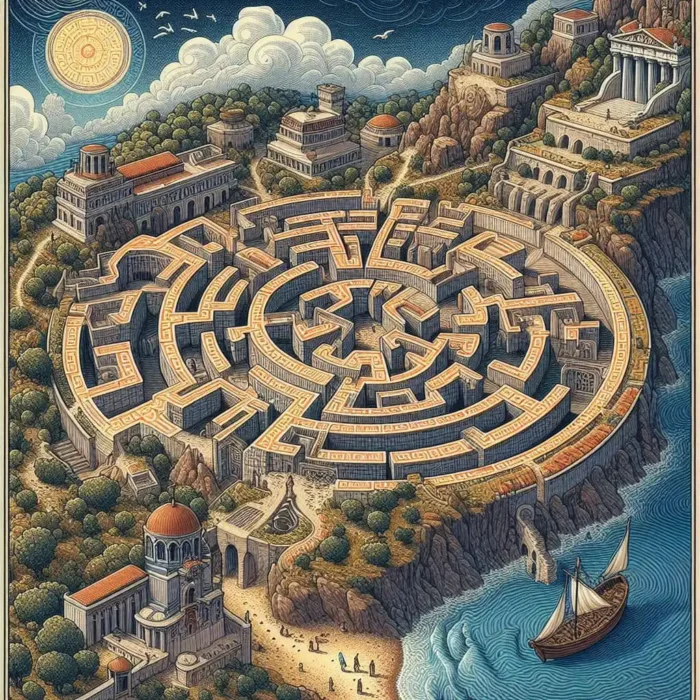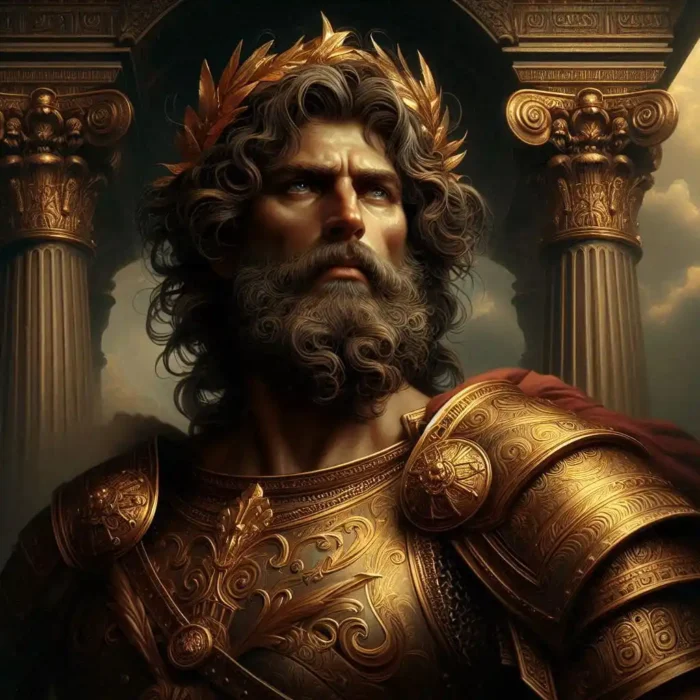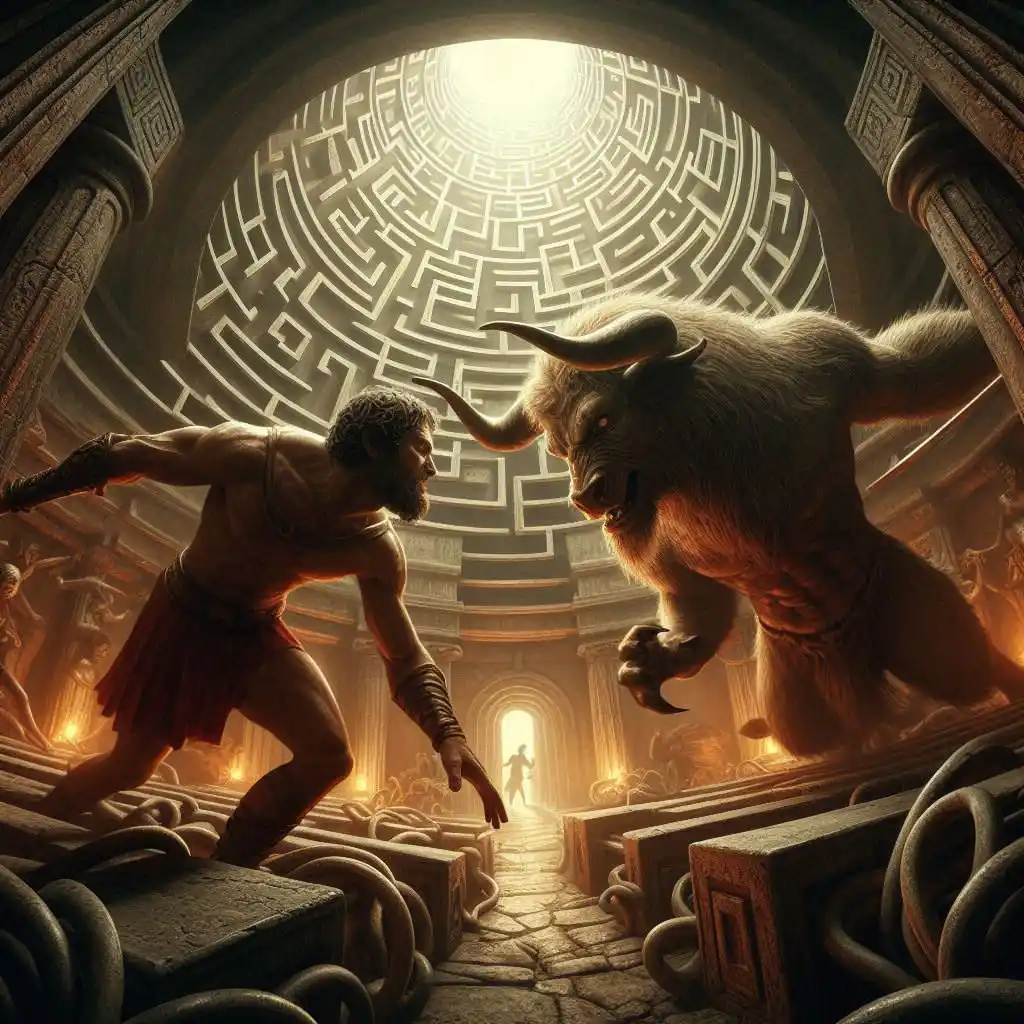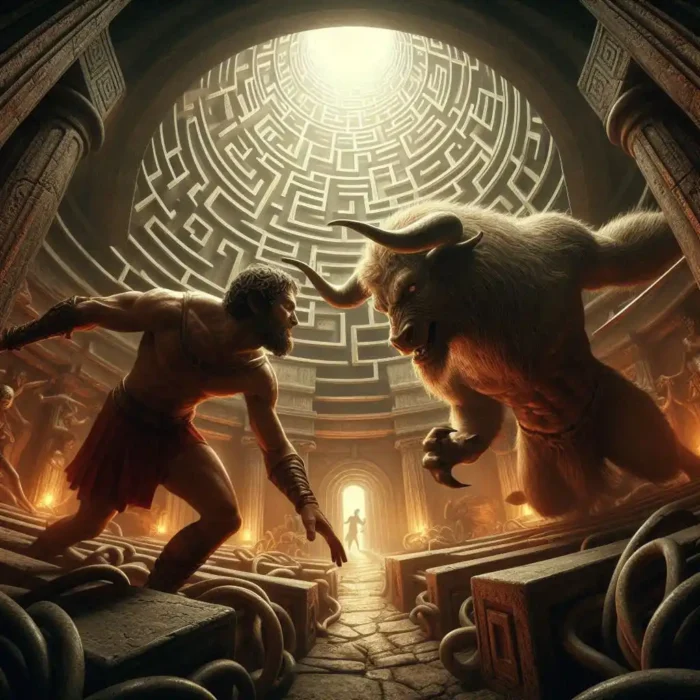The tale of Theseus and the Minotaur is more than a myth; it is a tapestry of heroism, cunning, love, divine intervention, and the dark beauty of fate.
Every hero adventure in Greek mythology carries echoes of this labyrinth: the struggle, the cunning, the battle against impossible odds, and the inevitability of consequence.
The Curse and the Birth of the Minotaur
The story begins with a cruel twist of divine punishment.
King Minos of Crete had prayed to Poseidon for a sign to prove his right to rule. Poseidon sent a magnificent white bull from the sea, expecting Minos to sacrifice it. Yet Minos, consumed by pride, refused.
In retaliation, Poseidon cursed Minos’s wife, Pasiphae, to fall in love with the bull.
From their unnatural union was born the Minotaur, a creature with the body of a man and the head of a bull. A beast that should never have existed, doomed to hunger and rage.
The Labyrinth: A Prison of Stone


To contain the Minotaur, Minos commanded Daedalus, the master inventor, to construct the labyrinth beneath the palace of Knossos. Endless corridors, twisting paths, and dead ends designed to trap the monster forever.
The Minotaur lived there, fed on human tributes: every seven years, Athens was forced to send seven young men and seven young women, a blood tax for the death of Minos’s son during a failed peace mission.
Theseus Volunteers
Prince Theseus of Athens could no longer bear the suffering of his people. He volunteered to face the labyrinth and kill the Minotaur, determined to end the curse and the tributes.
Upon arriving in Crete, he encountered Ariadne, Minos’s daughter. Recognizing Theseus’s courage and purpose, she gave him a golden thread, instructing him to unwind it as he entered the labyrinth so he could retrace his path and escape.
The Labyrinth Journey


Theseus entered the labyrinth with a mixture of fear and resolve.
Shadows stretched like claws, corridors twisted endlessly, and the air was heavy with the scent of death and stone.
As he wandered, he felt the presence of something unnatural, something aware. Finally, in the heart of the maze, he faced the Minotaur.
The beast’s eyes glimmered with sadness, as though it knew its fate was sealed. Its roar echoed through the stone corridors, terrifying yet mournful, a creature trapped between nature and curse.
The Battle
The fight was brutal. Theseus dodged deadly horns, parried savage strikes, and used every ounce of skill and cunning.
The Minotaur, driven by both hunger and sorrow, lunged with unstoppable force. Yet Theseus, brave and relentless, finally struck the fatal blow.
The labyrinth fell silent, save for the echo of a life ended and a curse broken. Using Ariadne’s thread, Theseus guided the surviving Athenians safely out of the maze.
Ariadne’s Fate
Ariadne joined Theseus in his escape, but fate—or the gods—intervened. Halfway through their journey home,
Theseus left her on the island of Naxos. The reasons remain shrouded in divine mystery, her destiny intertwined with both love and abandonment.
Return to Athens and the Tragic Ending
Theseus returned home a hero, yet a simple mistake sealed a final tragedy. He forgot to raise the white sails that would signal his success to his father, King Aegeus. Believing his son dead, cast himself into the sea, which was thereafter named the Aegean Sea.
The grief and heroism of the story are inseparable: victory came at a great cost, and the Minotaur’s shadow lingered, a reminder of human courage facing divine cruelty.
Legacy
The tale of Theseus and the Minotaur endures as a testament to courage, ingenuity, and the cost of heroism.
It reminds us that every triumph carries consequences, that cleverness and bravery can overcome even the darkest trials, and that myths shape not only the imagination but also the moral and cultural fabric of generations.









Comments